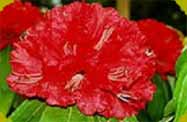|
HISTORY
It was Theophrastus
who first used the Greek word orchis to indicate the
particular group of plants whose roots, dried and chopped,
were used in traditional pharmacopioeia of Greece and
neighboring Asia Minor as anti-depressants and stimulants, and
even today in some rural areas of these countries “salep”,
nutritious drink prepared from the dried tubers of certain
orchids, is not uncommonly found.
Ancient Aztec inscription tell us
how the fruits of the tropical climbing orchid Vanilla was
used by Aztech peoples to flavor a traditional drink made from
cocoa beans.
Until the twentieth century, when
the technique of raising orchids in a greenhouse was
transformed by the efforts of Bernard, Knudson and Morel, the
plants hitherto cultivated by the great European collectors
with varying degree success during the previous 150 years, had
all originated from the collections that the famous plant
hunters, financed by European enthusiasts, sent or brought
back from the inter-tropical zones of other continents.
The orchids have
attracted the attention of botanists, horticulturists, and
layman for their unique properties that are usually not found
in other members of the plant kingdom. The increasing demand
of these usually attractive flowers both in the national and
international has led to the indiscriminate exploitation of
the members. At first, all epiphytic orchids were classified
as Epidendrum (meaning “tree-dwelling”).
Afterward it was realized that a
single genus could not cover the wide variety of plant being
discovered, so new genera were created.
However, it
is significant to note that the entire family Orchidaceae
being considered as rare and endangered plant group, has been
placed under category –I and II of Wild Life Conservation Act
under IUCN regulations.
With the discovery of aseptic
culture of seeds in a nutrient solution by Knudson (1946), it
became easier to germinate and culture orchids in vitro by
replacing the requirement of mycorrhizal fungus. Subsequent
discovery of clonal propagation from the merismatic tissue
(Morel 1950, 1964) revolutionalized the orchid industry.
Through this technique, it is now possible to micro-propagate
the desired clones of orchid species and hybrids in large
numbers. This technology has been widely adopted through out
the world for the conservation of rare and endangered plants,
as well as for commercial production of various plants
including orchids.
Because of their curious, long
lasting, brilliantly colored flowers, they occupy special
position in the floriculture industry. They are considered as
“gems” in the field of floriculture. Orchid accounts for 2.7%
of global cut – flower production in terms of value. Thailand
alone exports orchid worth more than 26 million (US $).
Thailand has more than 700 orchid growers and about 20
commercial Tissue culture laboratories producing more than 32
million plants of which 55% is exported.
Successful scientific research
into the reproduction, planting and cultivation of orchids has
now made orchid growing much easier, and what was previously a
mania pursued by a few privileged collectors has today been
transformed into a hobby for every one to enjoy.
Orchids have for a long been
regarded as flowers enjoyed exclusively by upper classes such
as royal families or wealthy people. With the discovery of
the mericional method, the time has come when they can be
enjoyed by anyone, much as is the case with most ordinary
flowers.
|
|
|
|

Rhododendron


Amongst the many
floral treaties of Sikkim Himalaya one of the earliest ones may be
found over the genus Rhododendron (Gk. rhodo = red, dendrons = tree
). |
| |
|
|
|

Orchid


Orchid
known for their brilliance in colors, unusual shapes
attractive growth habits, variety in fragrance and
exquisite beauty can attract any nature lovers. |
| |
|
|
|

Medicinal Plant


Sikkim
with its total geographical area of 7,096 sq km is
bestowed with a huge diversity of flora and fauna. |
| |
|
|
|
|
|